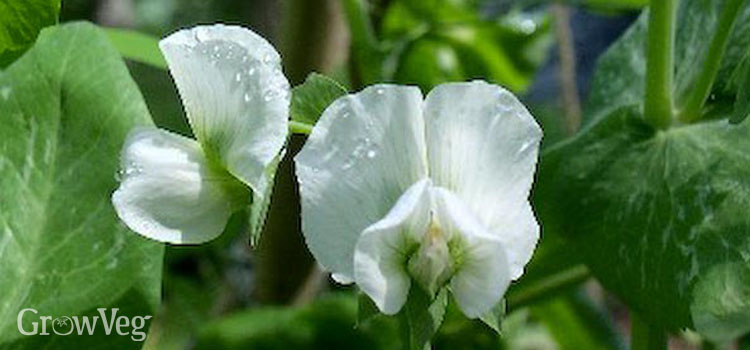This I clipped from another blog but it is useful.
Garden peas including shell, snow and snap peas have two characteristics that make them strong candidates for super-productive planting plans. First, peas vine upward, and their vertical posture makes it possible to plant a low-growing crop at their base. Second, in most climates spring-planted peas finish producing in midsummer, leaving a nice chunk of growing season left for growing another major vegetable after peas. Whether you are talking intercropping (planting multiple vegetables in shared space) or succession planting (following one vegetable with another in the same season), garden peas provide plenty of creative opportunities.
Each year I grow all three types of pea (snow peas, snap peas and shell peas) though the shell peas never make it into the kitchen because we eat them in the garden. This makes it even more important to maximize the space we give to peas. Snap peas are the most productive type because of their plump pods. In a good year, we freeze enough snap peas to last until spring.

Interplanting With Peas
All garden peas, including short varieties, need some type of support. Your trellising opportunities are endless, because peas will use their strong tendrils to cling to almost any support. Your trellis design has substantial bearing on any interplanting plan. If you have an upright trellis down the center of a bed, the available interplanting space is on the outside of the peas. The two simple pea planting plans (at right, top beds) show how you might do this with leafy greens like lettuce, arugula or spinach, or with shallow-rooted radishes and green onions. I like the greens option best because leafy greens shade the pea roots and help keep them cool. To keep from disturbing the pea roots, I harvest these salad greens by cutting them rather than by pulling up the plants.
The plan changes if you plant peas in widely spaced rows, and provide a slanted diagonal trellis. This creates a sheltered spot down the middle of the row, which can be planted with onions or potatoes (see above illustration, bottom two beds). In climates where mild spring weather never lasts long enough, this is an excellent way to get a nice summer crop of new potatoes despite the early onset of hot weather.
Succession Planting with Peas
It's natural to want to wait for pea plants to produce every last pea, but you will need a more ruthless attitude to terminate your peas to make room for a new crop. Many gardeners (including me) like to follow peas with cucumbers or squash, which can make use of the trellis erected for the peas. There is no need to pull up the peas - simply snip them off at the soil line. Any unused nitrogen nodules on the pea roots will be in position to help nurture the next crop.

Several gardeners I know conduct covert operations in their pea patches by snipping out individual pea plants and slipping in cucumber or squash seedlings while the remaining peas are still growing. How do you know when to mobilize with a succession crop? Regardless of their type and size, peas eventually run out of steam, which is apparent when the new pods form at the stem tips rather than on side branches. Pod set in peas always proceeds in a predictable sequence from the bottom of the plant to the top. When only pods at the stems' topmost tips remain, it's time for a change.
If you do stage a complete renovation of the pea bed (unavoidable when interplanting with potatoes), consider carrots as your succession crop. A good friend who is also one of the best vegetable gardeners I know highly recommends this succession. In climates with long and lovely autumns, you may be able to grow broccoli after peas, too. Please share what works for you in your garden, because few of us ever get enough garden peas.